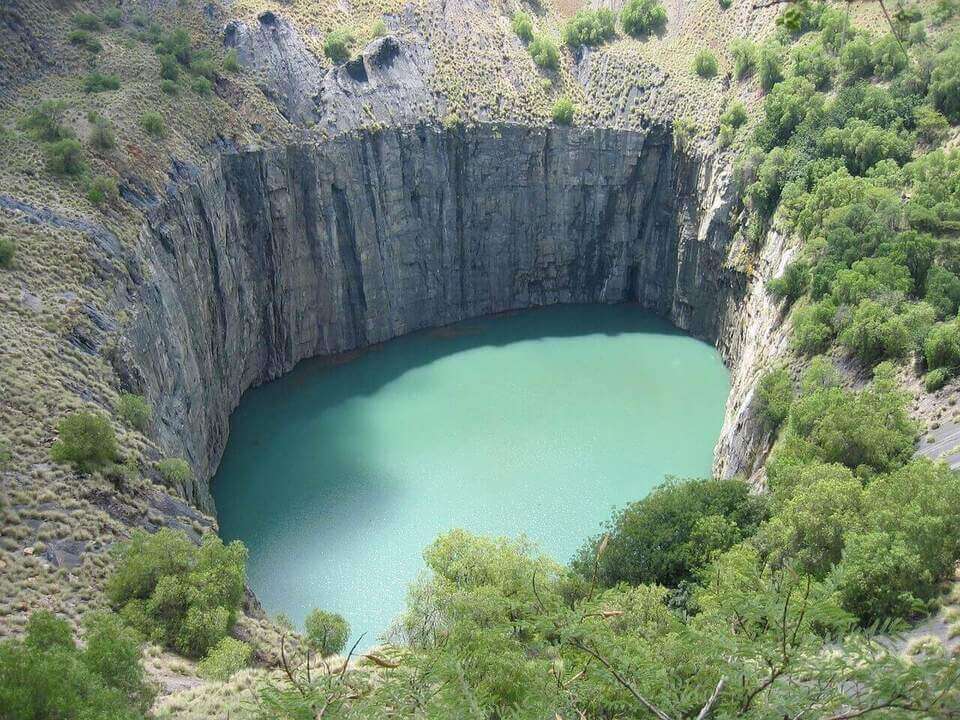In the 1930s to mid-1900s, the diamond mining company De Beers Consolidated Mines Ltd. launched an advertising campaign that successfully established diamonds as the gemstone of choice for engagement rings. This was the beginning of the booming diamond jewelry industry that would lead to an increased production of gem-quality diamonds around the world.
Slave Labor and the Blood Diamond Trade
However, a high demand and price for diamonds wasn’t good news for everyone. In a largely unregulated industry that was still centered in Africa, some mine owners took advantage of the boom to extract diamonds using forced labor and child workers—trading the resulting diamonds illegally and using the profit to fund wars and insurgencies in conflict-ridden areas.
In 2006, the release of the film Blood Diamonds brought these problems to the attention of the public and customers started to take an interest in the origins of their jewelry. Wishing to purchase only conflict-free diamonds, jewelry clients began to ask jewelry companies where their diamonds are mined and whether slave labor and illegal trading may have been involved in the creation of the rings in the store’s display cases.
Where Are Diamonds Mined?
Traditionally, the African nations of South Africa, Angola, D.R. Congo, Namibia, and Lesotho were the primary producers of rough diamonds. However, natural diamonds today are actually mined in several different regions around the globe, including Russia, Canada, China, and Australia.
Of these countries, you may wonder where diamonds are mined in the largest quantities. According to the 2019 U.S. Geological Survey, the three largest producers of diamond gemstones are currently Russia, Botswana, and Canada, followed by the African nations of Angola, South Africa, D.R. Congo, Namibia, and Lesotho.
Where Diamonds Are Mined: From Deserts and Rivers to Coasts and Oceans

In most of the countries where diamonds are mined, the rough stones are extracted from open-pit mines where kimberlite “pipes” have been discovered underground. A prime example of this is the Big Hole mine in South Africa, which was open from 1871 until 1914. This open-pit mine is unique in that its 42-acre area and 800-foot depth was excavated entirely by hand—requiring the efforts of thousands of workers and producing about 14 million carats of gem-quality conflict-free diamonds during its years of operation.
Where Are Alluvial Diamonds Mined?
The other place where diamonds can be mined is in the sediment of riverbanks, along coastal shorelines, and by trawling the ocean floor. Known as “alluvial diamonds,” these diamond deposits have been removed from their origins in the kimberlite pipes through a process of erosion and carried by the flow of water to their new resting places. There, they are mined by formal companies with machinery and with hand and sieve by informal groups of locals.
Improving Conditions for Informal Diamond Diggers
There are currently three national and international organizations that are working to help informal diamond diggers organize themselves into cooperatives so that they can enjoy improved working conditions and receive a fair price for their conflict-free diamonds. These organizations are:
- The Diamond Development Initiative (DDI)
- The Peace Diamond Alliance (PDA)
- The Mwadui Community Diamond Partnership (in Tanzania)
Where Are AZEERA Diamonds Mined?
At AZEERA, we don’t take any chances regarding the origins of our diamonds. In contrast to large jewelry companies that use diamonds of unknown origin (or mix natural diamonds with lab-grown diamonds in the final product), we source our rough, conflict-free diamonds directly from suppliers our family has known for generations and cut and grade them ourselves in our Jaipur facility in India.
After our diamonds are cut and polished by our professional cutters, they are shipped to our office in New York for a final inspection before being approved for placement in our custom engagement rings and wedding rings. Everyone involved in the process—from the workers where our diamonds are mined to the master cutters—is paid fairly and treated well for a result that is 100% conflict-free and infused with passion. We want our workers to be just as happy to work for us as our clients are when they receive their one-of-a-kind rings and cufflinks. The result is a superior product that continues to bring delight for years after purchase.
To learn more about where diamonds are mined and to discover our full range of colored gemstones, we invite you to browse our Education section and to contact us via our live chat feature or by sending us an email. All of our handcrafted jewelry comes with free, fully-insured shipping and a lifetime guarantee. Shop conflict-free diamond rings today!
















































































